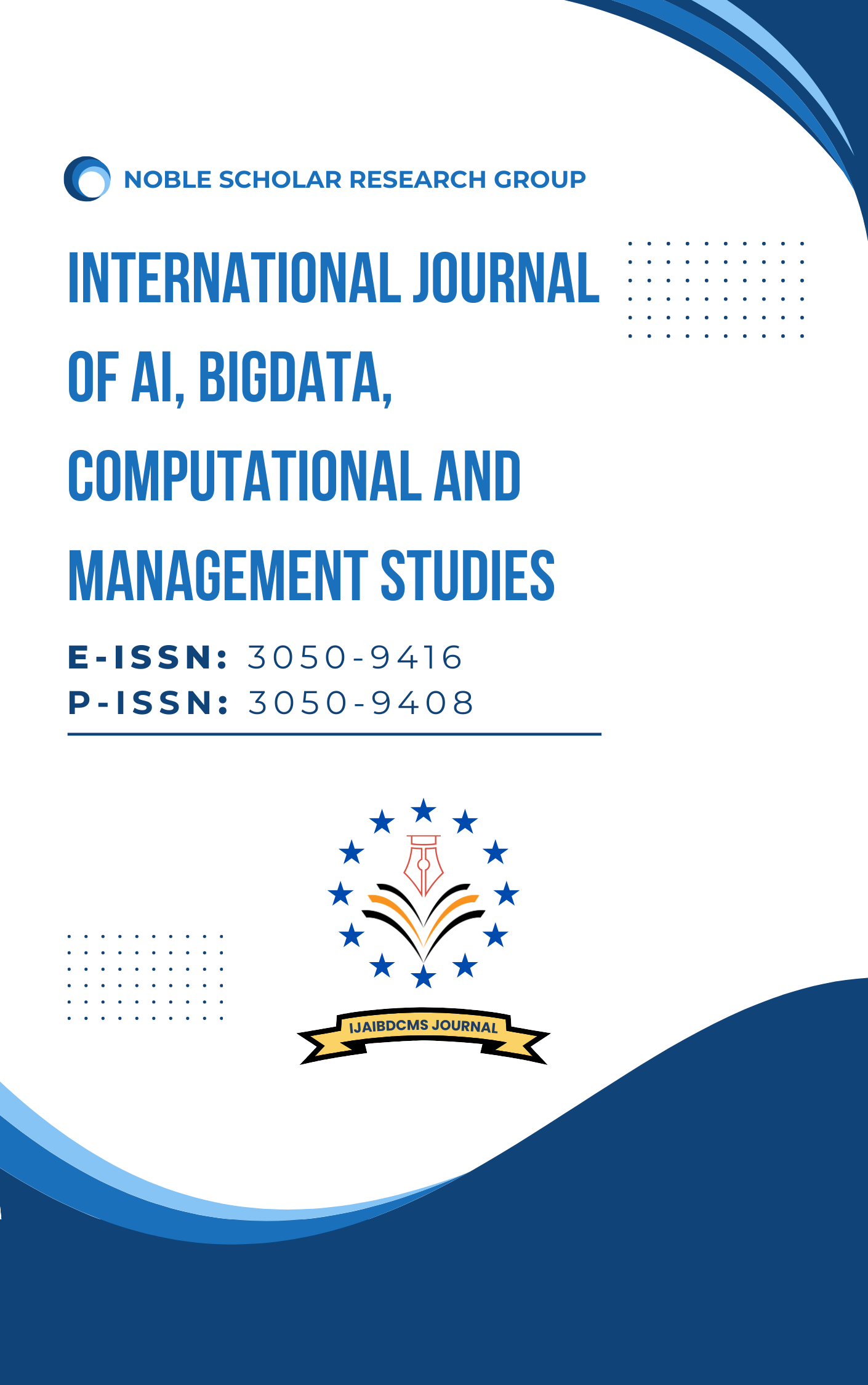Smart Devices, Smarter Data: Enhancing Quality in the Age of Ubiquitous Computing
DOI:
https://doi.org/10.63282/3050-9416.IJAIBDCMS-V4I1P105Keywords:
Ubiquitous computing, data quality, smart devices, edge computing, privacyAbstract
Advanced advancements in computing technologies have seen smart technologies get integrated into society to the extent of forming nearly every component of societal life. These include wearable, home automation systems, Industrial IoT machines, and all the other IoT devices in the market that produce large data. This paper aims to explore the changing trends in leveraging ubiquitous computing to improve the quality and effectiveness of data. When it comes to numbers, managing a huge amount of connected devices and determining the accuracy and relevance of data at the proper time becomes difficult. To this end, in this paper, we define and discuss data intelligence within the context of UC, especially by reviewing mechanisms such as edge computing, Analytics, and Context Awareness. Besides, the paper explores factors such as architectural aspects, privacy concerns, standards requirements, and a discussion on the impact of interconnectivity on enhancing data environments. Based on the literature review study, methodological framework and experimentation, this paper presents an integrated approach to improve the data quality in the smart device context. Hence, it is possible to conclude that everyone could benefit from making the systems adaptive, decentralized and secure to enhance the outcomes of data processing in ubiquitous environments to support smarter decision-making across various fields
References
1. Weiser, M. (1991). The Computer for the 21st Century. Scientific American, 265(3), 94-105.
2. Atzori, L., Iera, A., & Morabito, G. (2010). The internet of things: A survey. Computer Networks, 54(15), 2787-2805.
3. Gubbi, J., Buyya, R., Marusic, S., & Palaniswami, M. (2013). Internet of Things (IoT): A vision, architectural elements, and future directions. Future generation computer systems, 29(7), 1645-1660.
4. Wang, R. Y., & Strong, D. M. (1996). Beyond accuracy: What data quality means to data consumers. Journal of Management Information Systems, 12(4), 5-33.
5. Pipino, L. L., Lee, Y. W., & Wang, R. Y. (2002). Data quality assessment. Communications of the ACM, 45(4), 211-218.
6. Dobre, C., & Xhafa, F. (2014). Intelligent services for big data science. Future generation computer systems, 37, 267-281.
7. Shi, W., Cao, J., Zhang, Q., Li, Y., & Xu, L. (2016). Edge computing: Vision and challenges. IEEE internet of things journal, 3(5), 637-646.
8. Krittanawong, C., Zhang, H., Wang, Z., Aydar, M., & Kitai, T. (2017). Artificial intelligence in precision cardiovascular medicine. Journal of the American College of Cardiology, 69(21), 2657-2664.
9. Salah, K., Rehman, M. H. U., Nizamuddin, N., & Al-Fuqaha, A. (2019). Blockchain for AI: Review and open research challenges. IEEE Access, 7, 10127-10149.
10. Aazam, M., St-Hilaire, M., Lung, C. H., & Lambadaris, I. (2016, October). Cloud-based smart waste management for smart cities. In 2016 IEEE 21st International workshop on computer-aided modelling and design of communication links and networks (CAMAD) (pp. 188-193). IEEE.
11. Perera, C., Zaslavsky, A., Christen, P., & Georgakopoulos, D. (2013). Context aware computing for the internet of things: A survey. IEEE communications surveys & tutorials, 16(1), 414-454.
12. Poslad, S. (2011). Ubiquitous computing: smart devices, environments and interactions. John Wiley & Sons.
13. Greenfield, A. (2010). Everywhere: The dawning age of ubiquitous computing. New Riders.
14. Alam, F., Mehmood, R., Katib, I., Albogami, N. N., & Albeshri, A. (2017). Data fusion and IoT for smart ubiquitous environments: A survey. Ieee Access, 5, 9533-9554.
15. Mühlhäuser, M., & Gurevych, I. (2010). Introduction to ubiquitous computing. In Ubiquitous and pervasive computing: Concepts, methodologies, tools, and applications (pp. 1-19). IGI Global.
16. Kohtake, N., Matsumiya, K., Takashio, K., & Tokuda, H. (2003, October). Smart device collaboration for the ubiquitous computing environment. In Workshop of Multi-Device Interface for Ubiquitous Peripheral Interaction, Fifth International Conference on Ubiquitous Computing (UbiComp2003), USA.
17. Alshqaqi, S. A., Zahary, A. T., & Zayed, M. M. (2019, December). Ubiquitous computing environment: Literature review. In 2019 First International Conference of Intelligent Computing and Engineering (ICOICE) (pp. 1-8). IEEE.
18. Römer, K., Schoch, T., Mattern, F., & Dübendorfer, T. (2004). Smart identification frameworks for ubiquitous computing applications. Wireless Networks, 10, 689-700.
19. Want, R. (2010). An introduction to ubiquitous computing. Ubiquitous computing fundamentals, 1-36.



